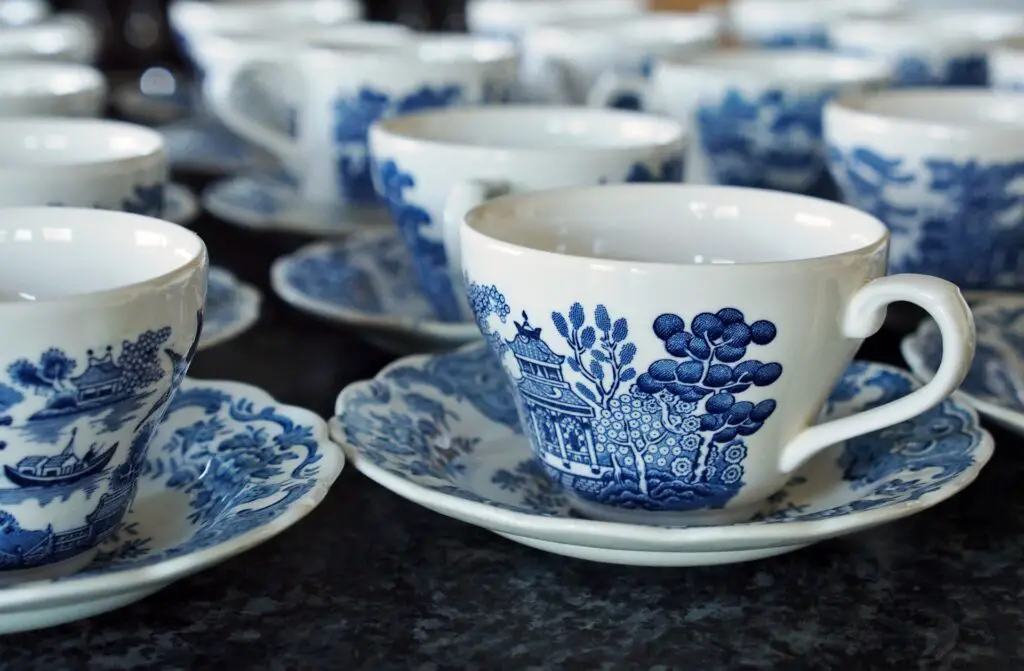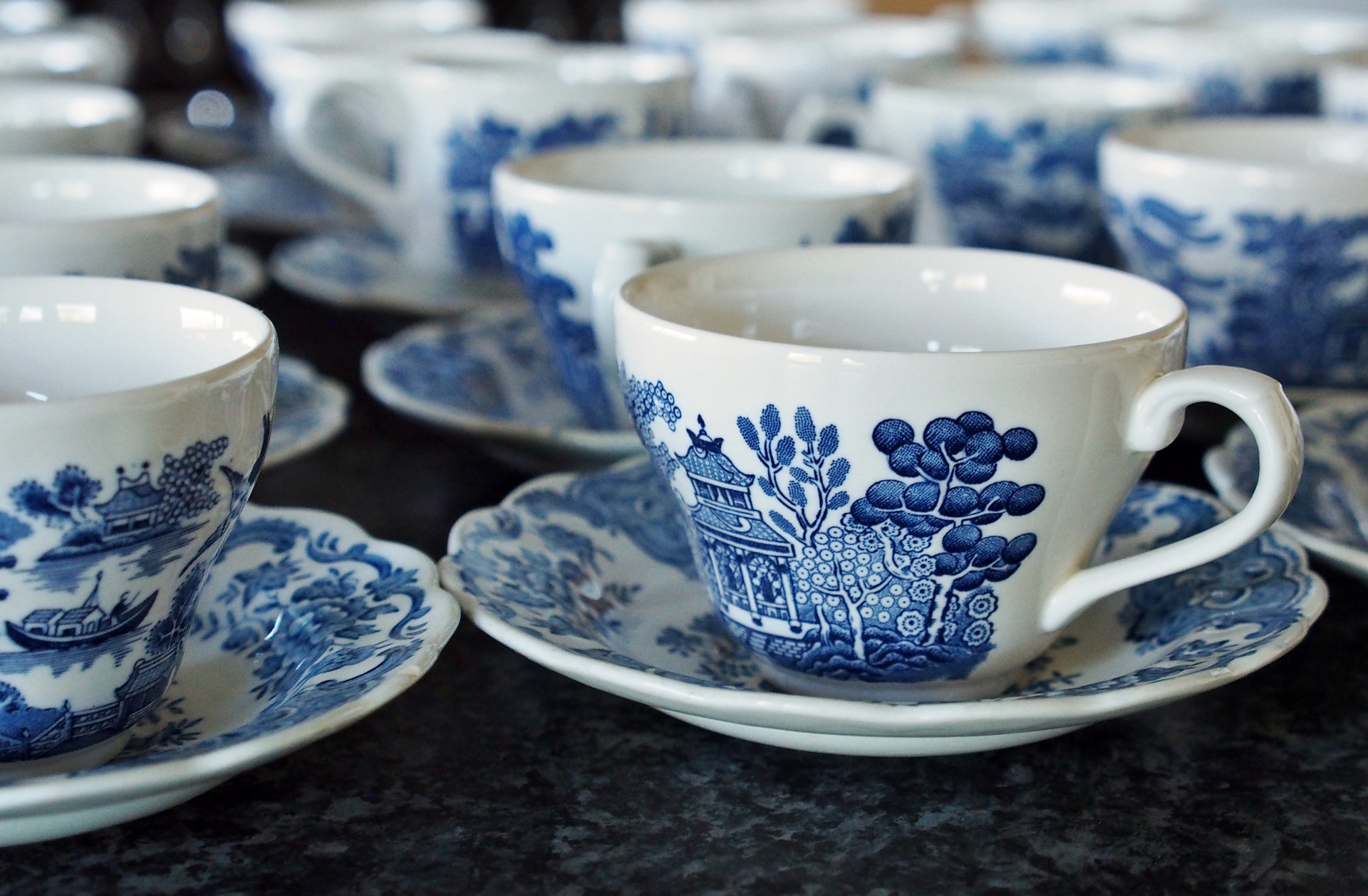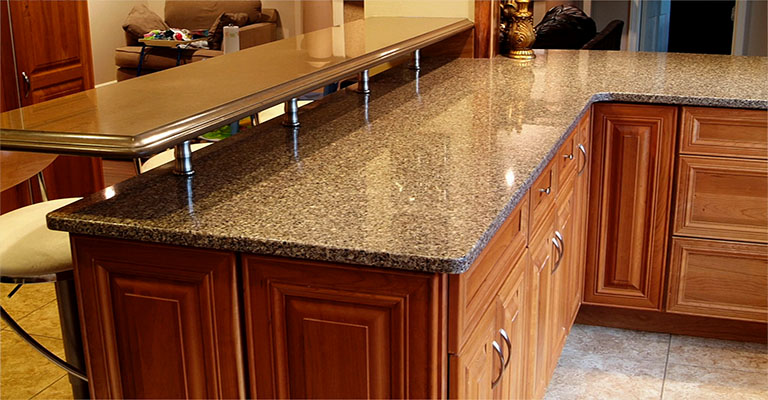Porcelain vs Ceramic: Making the Right Choice

Porcelain and ceramic are two popular materials used in the production of tiles, dinnerware, and decorative items. Both materials have their unique characteristics, but they are often used interchangeably, leading to confusion among consumers. This article aims to provide a clear understanding of the differences between porcelain and ceramic, their properties, and their best uses.
Porcelain is a type of ceramic that is made from a mixture of kaolin, feldspar, and quartz. It is fired at a higher temperature than ceramic, which makes it denser, harder, and less porous. Porcelain is known for its strength, durability, and resistance to moisture, making it ideal for use in high-traffic areas like bathrooms and kitchens. It also has a translucent quality that gives it a unique appearance, making it a popular choice for decorative items and figurines.
Ceramic, on the other hand, is a broad term that encompasses a wide range of products made from clay and other natural materials. It is fired at a lower temperature than porcelain, which makes it more porous and less durable. Ceramic is often used for decorative purposes, such as vases, planters, and figurines, but it can also be used for functional items like dinnerware and tiles. While ceramic is not as strong as porcelain, it is still a popular choice for many homeowners due to its affordability and versatility.
Materials and Composition
Porcelain Characteristics
Porcelain is a type of ceramic that is made from a mixture of kaolin, feldspar, and quartz. It is fired at a high temperature, which makes it dense, hard, and impermeable. Porcelain has a smooth, glass-like surface that is resistant to scratches, stains, and chipping. It is also non-porous, which means that it does not absorb liquids or odors.
Porcelain is known for its strength and durability. It is commonly used for making dinnerware, bathroom fixtures, and decorative objects. Porcelain is also used in dentistry for making dental crowns, veneers, and bridges.
Ceramic Characteristics
Ceramic is a broad term that refers to any material that is made from clay and other natural materials. Ceramic can be fired at a low or high temperature, depending on the desired outcome. It can be porous or non-porous, depending on the type of clay and firing temperature.
Ceramic is known for its versatility and affordability. It can be molded into different shapes and sizes, and it can be decorated with various colors and patterns. Ceramic is commonly used for making tiles, mugs, vases, and figurines.
In summary, porcelain and ceramic are both made from clay and other natural materials, but they have different characteristics and uses. Porcelain is stronger, denser, and more impermeable than ceramic, and it is commonly used for making high-end dinnerware and bathroom fixtures. Ceramic is more versatile and affordable than porcelain, and it is commonly used for making tiles and decorative objects.
Manufacturing Process
Porcelain Production
Porcelain is a type of ceramic that is made from a mixture of kaolin, feldspar, and quartz. The manufacturing process for porcelain involves several steps, including mixing, molding, drying, and firing.
The first step in the production of porcelain is mixing the raw materials. The ingredients are carefully measured and mixed together to create a homogenous mixture. The mixture is then molded into the desired shape, such as plates, cups, or bowls.
After molding, the porcelain is dried to remove any excess moisture. The drying process is critical, as any remaining moisture can cause the porcelain to crack or warp during firing.
Once the porcelain is dry, it is fired in a kiln at a high temperature. The firing process is what gives porcelain its strength and durability. During firing, the kaolin in the mixture undergoes a chemical transformation, which causes the porcelain to become hard and vitrified.
Ceramic Production
Ceramic is a broad term that encompasses a wide range of materials, including earthenware, stoneware, and porcelain. The manufacturing process for ceramic varies depending on the type of ceramic being produced.
Earthenware is the simplest type of ceramic to produce. The manufacturing process involves mixing clay with water to create a workable paste. The clay is then molded into the desired shape and fired at a relatively low temperature.
Stoneware is a more durable type of ceramic that is made from a mixture of clay and other materials, such as feldspar and quartz. The manufacturing process for stoneware is similar to that of earthenware, but the firing temperature is higher, which makes the stoneware stronger and more durable.
Porcelain, as previously mentioned, is a type of ceramic that is made from a mixture of kaolin, feldspar, and quartz. The manufacturing process for porcelain is more complex than that of earthenware or stoneware, and involves multiple steps, including mixing, molding, drying, and firing.
In conclusion, the manufacturing process for porcelain and ceramic varies depending on the type of ceramic being produced. Porcelain is made from a mixture of kaolin, feldspar, and quartz, and undergoes a complex manufacturing process that involves multiple steps. Earthenware and stoneware, on the other hand, are simpler to produce and involve fewer steps.
Properties and Performance
When it comes to properties and performance, porcelain and ceramic have some key differences. Here, we’ll take a closer look at durability and density, water absorption, and maintenance and care for both materials.
Durability and Density
Porcelain is known for its durability and density, making it a popular choice for high-traffic areas and outdoor spaces. It is fired at a higher temperature than ceramic, which makes it harder and more resistant to chipping and scratching. Ceramic, on the other hand, is more porous and softer than porcelain, making it more prone to damage.
Water Absorption
Another key difference between porcelain and ceramic is their water absorption rates. Porcelain has a very low water absorption rate, typically less than 0.5%, which makes it highly resistant to water damage. Ceramic, on the other hand, has a higher water absorption rate, typically between 3% and 7%, which makes it more susceptible to water damage and staining.
Maintenance and Care
When it comes to maintenance and care, both porcelain and ceramic are relatively easy to clean and maintain. However, porcelain is generally considered to be more stain-resistant and easier to clean than ceramic. Porcelain is also less likely to require sealing, as it is less porous than ceramic.
Overall, while both porcelain and ceramic have their advantages and disadvantages, it’s important to consider your specific needs and preferences before making a decision. If durability and water resistance are top priorities, porcelain may be the better choice. If you’re looking for a more budget-friendly option, ceramic may be the way to go.

Applications and Uses
Flooring
Porcelain and ceramic tiles are both popular choices for flooring. Porcelain tiles are denser and more durable, making them a better choice for high traffic areas. They are also less porous than ceramic tiles, which means they are less likely to absorb water or stains. Ceramic tiles are a good choice for areas with less foot traffic or where there is less risk of water damage. They are also generally less expensive than porcelain tiles.
Countertops
Porcelain and ceramic tiles can both be used for countertops, but porcelain tiles are generally a better choice. Porcelain tiles are harder and more durable, which means they are less likely to scratch or chip. They are also less porous than ceramic tiles, which makes them less likely to stain. Ceramic tiles can still be used for countertops, but they may require more maintenance to keep them looking their best.
Art and Decor
Both porcelain and ceramic are popular choices for art and decor pieces. Porcelain is often used for delicate figurines and other decorative pieces, while ceramic is often used for more functional items like vases and bowls. Both materials can be glazed and painted to create unique and beautiful pieces.
In summary, porcelain and ceramic tiles both have their own unique advantages and disadvantages. Porcelain tiles are generally more durable and less porous, making them a better choice for high traffic areas and areas where water damage is a concern. Ceramic tiles are less expensive and can still be used for many applications, but may require more maintenance. When it comes to art and decor, both materials can be used to create beautiful and unique pieces.
Frequently Asked Questions (FAQs)
Q: What are the main differences between porcelain and ceramic when used for kitchen tiles?
A: Porcelain tiles are denser and less porous than ceramic tiles, making them more resistant to water and staining. They are also more durable and can withstand heavy foot traffic. Ceramic tiles, on the other hand, are more affordable and come in a wider variety of colors and patterns.
Q: How do porcelain and ceramic compare in terms of durability for flooring applications?
A: Porcelain tiles are generally more durable and scratch-resistant than ceramic tiles. They are also less likely to crack or chip under heavy loads. However, ceramic tiles can still be a good option for low-traffic areas or when cost is a concern.
Q: In the context of bathroom installations, which is preferable, porcelain or ceramic, and why?
A: Porcelain is generally the better choice for bathroom installations due to its water resistance and durability. It is also less likely to stain or develop mold and mildew. Ceramic tiles can still be used in bathrooms, but they may require more maintenance and may not last as long as porcelain tiles.
Q: Can you explain the cost variations between porcelain and ceramic tiles?
A: Porcelain tiles are generally more expensive than ceramic tiles due to their higher density and durability. They also require more energy to produce, which can increase their cost. Ceramic tiles are more affordable and come in a wider range of price points.
Q: What are the pros and cons of using porcelain tiles versus ceramic tiles?
A: Porcelain tiles are more durable and water-resistant than ceramic tiles, making them a good option for high-traffic areas and wet environments. They are also less likely to stain or develop mold and mildew. However, porcelain tiles are more expensive and may require professional installation. Ceramic tiles are more affordable and come in a wider variety of colors and patterns, but they may not be as durable or water-resistant as porcelain tiles.
Q: When choosing crowns for dental work, what are the considerations between porcelain and ceramic?
A: Porcelain and ceramic crowns are both popular options for dental work. Porcelain crowns are more natural-looking and can be color-matched to the surrounding teeth. They are also more durable and less likely to chip or crack. Ceramic crowns are less expensive and may be a good option for patients on a budget. However, they may not be as durable or natural-looking as porcelain crowns.
Conclusion
When it comes to choosing between porcelain and ceramic tile for your home, understanding the distinct benefits each option offers is crucial. Porcelain floor tile, recognized for its durability and ability to mimic natural stone, is an excellent choice for high-traffic areas, offering an upscale look without the high maintenance. On the other hand, ceramic tiles offer a cost-effective solution with a wide range of designs, making them ideal for bathroom floors and walls. Whether you opt for porcelain or ceramic tile, both materials provide a practical and stylish flooring option.
The decision between ceramic or porcelain tiles ultimately hinges on your specific needs, including considerations for porcelain tile installation costs and the desired aesthetic appeal of glazed ceramic or the natural beauty of unglazed ceramic. Selecting the right tile, be it ceramic or porcelain, involves weighing factors such as the square foot coverage needed, the benefits of large format porcelain tiles for a seamless look, and the unique characteristics that ceramic tile makes available, such as a wide variety of finishes from glazed to unglazed.
The versatility of porcelain and ceramic tile ensures that whether you’re renovating a kitchen, bathroom, or any other space in your home, you can find the perfect match that combines functionality with aesthetic elegance. Remember, a well-informed decision between porcelain and ceramic tiles not only enhances the beauty of your space but also ensures longevity and ease of maintenance, making your investment worthwhile.








